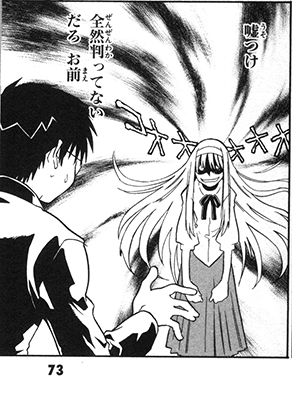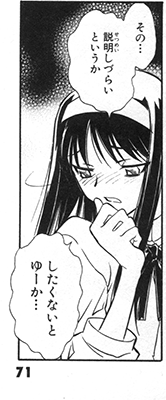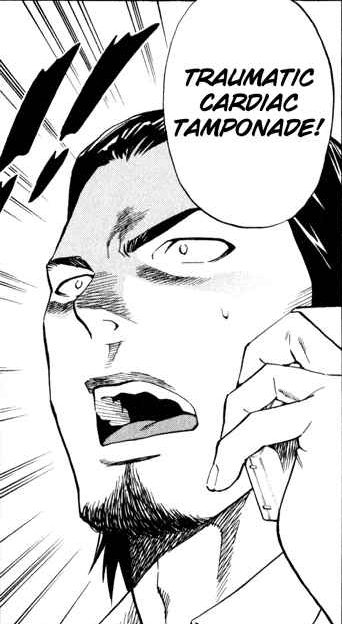Manga Reviews: Boku no Shokibo na Seikatsu, Yumewatari no Pulcinella, Fushigi no Kuni no Ringohime, JC.COM (all vols 1, some reviews may be instant)
Tuesday, January 20th, 2009In my futile attempts to get myself to post blog entries more often, I tend to leave manga sitting on my computer desk or on the floor below my desk until I either do one of my massive twice-a-semester room cleanings or one of my twice-a-semester manga reviews. Okay, maybe more like once a semester.
Boku no Shoukibo na Seikatsu (僕ã®å°è¦æ¨¡ãªç”Ÿæ´»ï¼‰, by Fukumitsu Shigeyuki (ç¦æº€ã—ã’ゆã). Vol 1 published 12/21/2007. Kodansha/Morning.

Boku no… is a semi-autobiographical story of a man struggling to break into the manga industry. It was also one of the most depressing things I read last semester. The story starts with the main character trying to balance making enough money through part-time jobs to supplement his wife’s pay in order to survive with his hopes of becoming a professional manga-ka. Throughout the course of the volume’s 25 chapters, he somehow manages to work his way from being rejected by eromanga publishers to getting serialized in a major (guess which one it is!). This, of course does not stop him from losing sleep in chapter after chapter over his various arguments with his wife (who gradually gains weight over the course of the volume–she seems to be a fan of the idea of comfort food) over small things which generally end with her getting violent, his social slip-ups, his thin finances, his fragile position as a professional manga-ka, and life in general being rough. We follow the main character around to his various meetings with editors and industry folks, his attempts to start a band with a friend, and basically every part of his often-miserable, but slowly proceeding life.
This is actually somewhat of a continuation of Boku no Shokibo na Shippai, which ran in AX (ps buy this when it comes out), and we actually see some of the process behind Shippai being created in this volume. What struck me most about this manga is how much I actually cared about the main character’s life. I felt miserable when he felt miserable, and I shared in his (often small) successes, but always carefully. The look at the interaction between him and his editors was also great to read from the position of someone interested in how the industry works, and I’m definitely going to pick up volume 2 whenever I get around to going to a real bookstore.
Yumewatari no Pulcinella (夢渡りã®ãƒ—ルãƒãƒãƒƒãƒ©), by Oiwa Kendi (大岩ケンヂ). Vol 1 published 8/26/2008. Kadokawa/Shonen Ace
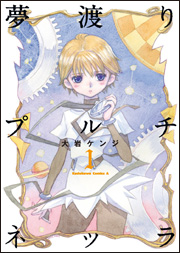
You know, I need to study for a quiz tomorrow so all I’m going to say about this is that if Oiwa Kendi illustrating NHK and Goth made you think he was unable to whip up a boilerplate school romance/fantasy story (boy in boring school life goes into mystery inner-soul dream world and meets cute girl and sexy girl who vie for his attention while with their help he goes into other peoples inner-soul dream worlds and fixes their problems, etc etc etc) when he’s all on his own, you are sorely mistaken. I am one of these sorely mistaken individuals, especially sore since I had the exact same reaction after buying both 99 Happy Soul AND Mahiru no Yojimbo. Maybe this time I’ll learn?
Fushigi no Kuni no Ringo-hime (è…ã—ãŽã®å›½ã®ãƒªãƒ³ã‚´å§«), Katoh Mayumi (åŠ è—¤ãƒžãƒ¦ãƒŸï¼‰. Vol 1 published 4/20/2008. Akita Shoten/Young Champion.

Rin is the top OL (office lady) at her company, jealously looked up to by the other women at the company on the track to marrying the soon to be rich alpha-male salaryman at her company. She also happens to be a fujoshi crazy about “Salaryman Ojisama”, and succeeds in keeping the two worlds separate from each other until a new girl shows up at the office, amusingly enough nicknamed “Moemoe”. Moemoe knows Rin from her junior high days of being a fat Salapri-obsessed fujoshi, and leverages this blackmail into a number of amusing yet now-stock situations like making her dress up like a street idol and have dudes wotagei to her songs, and of course going to a doujin event. If you had to know, there are also jokes about her only knowing about sex through extensive knowledge of yaoi and apparently Chobits.
I’m kind of conflicted about this manga – on one hand it did keep me reading for the most part, and got a few good laughs out of me. On the other hand, if you didn’t particularly like Mouou Shoujo Otaku-kei because it was a little too geared towards guys (I mean it ran in High and they run Kojika), you will probably have an aneurysm if you read this. I mean, it runs in a magazine with “Young” in its title. In other words, lots of breasts, and enough fujoshi stereotyping and borderline misogyny to even give me pause. I mean hell, at one point there is what is very close to one of those “girl gets raped, but you know she was asking for it” kinds of scenes. I might end up buying volume 2 hoping that it’ll manage to turn around, as it certainly could play off what’s been established in volume 1 to create a story that would allow the liberal arts major inside of me to recommend this, but until then approach with caution, I guess, especially if you haven’t bothered reading 801-chan or Mousou Shoujo yet or something.
JC.COM (Serial, Shueisha, 12/19/2008).
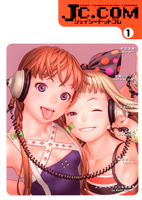
I saw a little of hype over this one here and there, and figured that I’d pick it up since I assumed that Range Murata cover and niche-sized anthology would mean that it’d be up my alley. Again, Japan has fooled me. This is mostly my fault, as I didn’t bother to actually read most of the hype beyond headlines, and so I didn’t notice the “From the artist of Highschool of the Dead” and the “From the creator of Chocotto Sister” and the “boobs from some guy who did a few series for CoroCoro”. So yeah, mostly girls or women in various states of undress and lots of fightin’ action. Not that there’s anything particularly wrong with that, and these all seem like perfectly competent series, it’s just that I had something a little more…pretentious in mind when I dropped over 800y on under 200 tankobon-sized pages with Murata drawing his signature young girls for the cover (amusingly titled The Muses of Range Murata). Oh well, there’s always Gelatin coming out next month, I’ll be prepared for the absolutely exquisite filth in that one.
